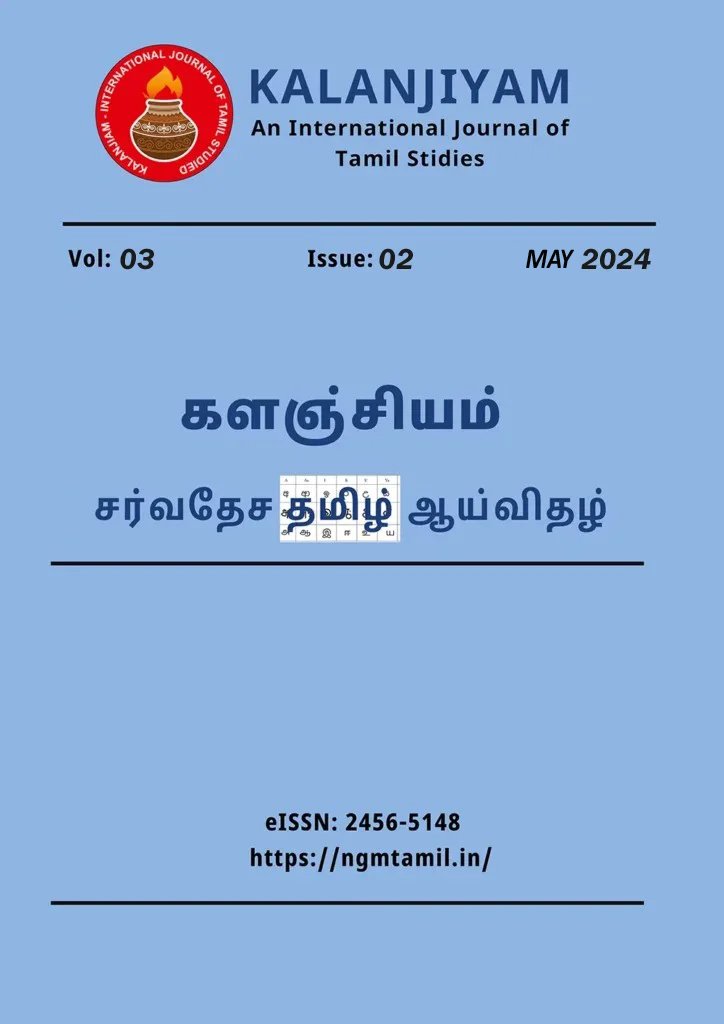மொழிபெயர்ப்பின் முக்கிய விதிகள் மற்றும் இன்றியமையாப் பண்புகள்
Basic Rules and Essential Characteristics of Translation
DOI:
https://doi.org/10.5281/Keywords:
Basic Rules of TranslationAbstract
பதினொட்டாம், பத்தொன்பதாம் நூற்றாண்டின் தொடக்கத்தில் வளர்ச்சிநிலை எட்டிய மொழிபெயர்ப்பு வளர்ச்சிநிலையை பெயர்த்து முதன் முதலில் பள்ளிகளுக்கு தேவையான நூல்களை மட்டும் தமிழ்மொழியில் தரும் நிலையில் அடியெடுத்து வைத்தன. 19 ஆம் நூற்றாண்டின் இடையில் ஆங்கில மொழி வளர்ச்சிநிலையில் பள்ளி மாணவர்களிடையே தமிழ்ப்பாடம் தவிர்த்து ஏனைய பாடங்களை ஆங்கிலமொழியில் படிக்கும் சூழ்நிலை உருவனதால் மொழிபெயர்ப்புப் பணி தொய்வு நிலையினை அடைந்தன. 20 ஆம் நூற்றாண்டின் தொடக்கத்திலேயே அவரவர் தாய்மொழியில் பள்ளிக்கல்வியை பயில வேண்டும் என்ற நோக்கத்தினால் மொழிபெயர்ப்பு பணியானது மீண்டும் வளர்ச்சிநிலையினை பெற துவங்கின. இதனால் அனைத்து துறை ஆராய்ச்சி முடிவுகள், கட்டுரைகள், புதியக் கண்டுபிடிப்புகள், வேளாண் தொழில்நுட்பங்கள், அறிவியல் தொழில்நுட்பங்களை அறிந்து கொள்ளும் விதமாக தமிழ் மொழியிலேயே மொழிபெயர்த்து தர வேண்டிய அவசியத்தின் தேவைக் கருதி மொழிபெயர்ப்புப் பணியில் கவனம் செலுத்தப்பட்டது. இரண்டாயிரமாண்டுக் காலமாகப் பாலி, பிராகிருதம், சமஸ்கிருதம் போன்ற மொழிகளிலிருந்து தமிழில் மொழிபெயர்க்கப்பட்ட முயற்சிகள், கருத்து நிலையில் அமைந்தனவாகும். ஒரு நூலினை வரிக்குவரி முழுமையாக மொழிபெயர்ப்பது, மேலை நாட்டவரின் பெயர்ப்புடன் தொடங்குகின்றன.
“ செப்புமொழி பதினெட்டு டையாள்
எனினும் சிந்தனை ஒன்றுடையாள்”
ஆக, அமேசான் நதிக்கரையோரத்தில் ஒருவன் காணுகின்ற கனவுகள் காவிரிக் கரையோரத்தில் இருக்கின்ற ஒருவனுக்கு இனிமேல் புலனாக வேண்டும்.
“ சென்றிடுவீர் எட்டுத்திக்கும் – கலைச்
செல்வங்கள் யாவும் கொணர்ந்துதிங்கு சேர்ப்போம்”
- பாரதியார்
என்று மொழிபெயர்ப்பில் நம்மில் காணப்படுகின்ற குறையைப் போக்குவதற்கு மொழி பெயர்ப்பாளர்கள் துணிந்து செயல்படுமாறு உத்தரவிடுகிறார். இருப்பினும் பிறநாட்டு நல்லறிஞர் சாத்திரங்கள் நூறுக்கும் மேற்பட்டவை தமிழ் மொழியில் மொழிபெயர்க்கப்பட்டுள்ளன என்பதால் மொழிபெயர்ப்புக்குரிய முக்கிய விதிகள், பண்புகள் குறித்து எனது அறிவிற்கு எட்டிய நிலையில் சில கருத்துக்களை இக்கட்டுரையின் வாயிலாக எடுத்துரைக்க காண்போம்.
At the beginning of the 19th century, the translation reached the stage of development and the first step was to provide only to the necessary books for the schools in Tamil language. In the middle of the 19th century, in the development of English language, the situation of studying other subjects in English language except Tamil language among there school students, the translation work reached a state of stagnation. At the beginning of the 20th century, the translation work started to gain development status again due to the aim of school in in their mother tongue. Thus, the need to translate, articles, new discoveries, agricultural techniques, scientific techniques into Tamil language was focused on the necessity of translation work. Over the past few centuries’s efforts to translate into Tamil from language such as palii, prakrit and Sanskrit have been conceptualized. They begin with a translation of a text by westerner. Seppumozhi is eighteen, however and the thought is united so, the dream that one sees on the banks of the Amazon River must be realized by one on the banks of the can very. We will gather all the riches of art that will reach you let’s collect all the artistic treasures that reach you Bharathiyar. That’s the shortcoming we see in the translation. He orders the translators to act bodily to overcome it. However since more than a hundred of the foreign sages’ satras have been translated into the Tamil language, we will present, some ideas through this article to the best of my knowledge about the main rules and characteristics of translation.
Downloads
References
பேரா. கா. பட்டாபிராமன், மொழிபெயர்ப்புக் கலை, பக். 1, 134, நியூசெஞ்சுரி புக் ஹவுஸ் (பி)லிட், 2005, சென்னை.
முனைவர் ந. அரணமுறுவல், தமிழும் மொழிபெயர்ப்பு முறைகளும், பக். 103, பாவை பப்ளிகேஷன்ஸ், 2005, சென்னை.
பேரா. டாக்டர் ரா. சீனிவாசன், மொழியியல், பக். 3, முல்லை நிலையம் , சென்னை.
மு. வளர்மதி, மொழிபெயர்ப்புக் கலை, பக். 54, திருமகள் நிலையம், 2003, சென்னை.
K.V.V.L NARASIMHA RAO, ASPECTS OF TRANSLATION, PAGE. 42, CENTRAL INSTITUTE OF INDIAN LANGUAGES, 2005, MYSORE
Downloads
Published
Issue
Section
License
Copyright (c) 2024 KALANJIYAM

This work is licensed under a Creative Commons Attribution-NonCommercial-NoDerivatives 4.0 International License.









